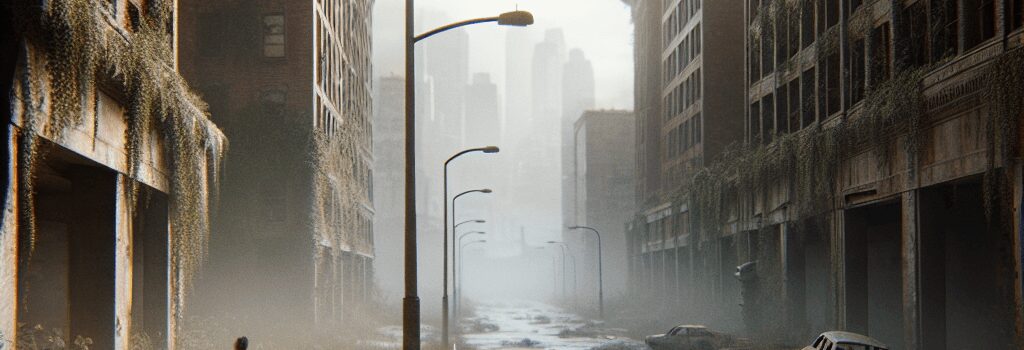The Last of Us Season 2: A Deep Dive into Its Faithfulness

Season 2 of HBO’s The Last of Us wrapped up with a bang—and a whimper—on Sunday night. While many fans appreciated the loyalty to Naughty Dog’s source material, others felt the adaptation became too faithful, sacrificing pacing, character depth, and narrative innovation in the process. Here, we revisit the finale through multiple lenses: story structure, character arcs, technical production, and the broader implications for game-to-screen adaptations.
Recap: A Finale That Splits Opinions
Ellie’s vengeful journey against Abby’s crew culminates in a brutal two-on-two confrontation, echoing scenes from The Last of Us Part II. Ellie tortures a WLF soldier for the clues “whale” and “wheel,” only to find her moral compass eroded. Meanwhile, subplots involving Dina’s pregnancy, Jesse’s loyalty, and the WLF–cultist conflict feel crammed into a seven-episode arc, leaving viewers torn between adrenaline-pumping action and uneven character moments.
Key Moments
- Ellie’s nighttime trek to the Ferris wheel—visually stunning but narratively thin.
- Torture scene yields two cryptic words, mirroring the game’s blunt storytelling.
- The subplot of Ellie’s near-execution by cultists: tense, yet feels like filler.
- Season cliffhanger: Abby’s perspective teaser, promising a shift in Season 3.
1. Adaptation Fidelity vs. Narrative Fluidity
Most adaptations face the challenge of balancing fidelity to the source with cinematic pacing. The Last of Us Season 2 often opts for frame-by-frame reenactment of game beats. While this pleases purists, it leaves little room for dynamic storytelling:
- Scene replication: Key sequences—like the underground torture and the dual killings—are lifted directly from the game’s scripting, preserving dialogue but sacrificing dramatic timing.
- Pacing constraints: With just seven episodes (versus nine in Season 1), the show rushes through arcs that could benefit from deeper exploration.
- Structural rigidity: The Majora’s Mask–style Day One, Day Two subtitles signal fixed beats rather than organic momentum.
2. Character Arcs Under the Microscope
Ellie’s descent into vengeance is coherent—she’s obsessive, impulsive, and haunted by Joel’s death. But the show grants her fewer moments of reflection:
“In adapting interactive media, you risk freezing characters into replayable tracks rather than letting them evolve organically,” says Dr. Emily Reyes, narrative design expert at the USC School of Cinematic Arts.
Secondary arcs—Dina’s pregnancy panic and Jesse’s moral dilemma—lean heavily on archetypes. Jesse’s line “I can’t die, I’m going to be a father” reads like TV Tropes 101, prompting viewers to question whether the writers relied too much on genre shorthand.
3. Technical Production and VFX Pipeline
The series maintains cinematic ambitions with:
- 6K RED cameras shooting in Dolby Vision HDR for rich color depth.
- VFX compositing in Foundry Nuke to blend practical sets with CGI environments.
- Motion capture via VICON systems, capturing subtle facial expressions for Ellie and Abby.
Despite high-end specs, some set-pieces—like the Ferris wheel—feel underutilized. VFX Supervisor Hannah Cho noted in Variety that “render times averaged 48 hours per shot, yet narrative beats sometimes lack the emotional payoff to justify the visual extravagance.”
4. Sound Design and Score: Elevating or Overbearing?
The score by Gustavo Santaolalla returns, weaving melancholic themes that echo Ellie’s trauma. Sound designer Mark Pontin layered 5.1 surround effects—whispers in dark corridors, distant gunshots—to enhance immersion. However, the constant build of tension can feel over-engineered, drowning quieter, character-driven moments.
5. Adapting Interactive Media: Challenges and Opportunities
Transitioning from a 30-hour game to 7×60-minute episodes imposes structural constraints:
- Player agency vs. viewer agency: Games let players explore subplots; TV must guide viewers swiftly.
- Branching narratives: Interactive loops—like scavenging and side missions—are trimmed to essentials, sometimes at the cost of world-building.
- Emotional resonance: Interactive empathy, fostered by player control, is harder to replicate in passive viewing.
6. Industry Context: Streaming and Viewer Expectations
HBO Max reported peak concurrent viewers of 1.3 million for the finale, but social media buzz trended more toward criticism than praise. In an era of 13-episode seasons (e.g., Stranger Things) and binge-release models, a shorter, weekly-released Season 2 may have struggled to maintain momentum.
“The demand for rapid turnarounds pressures showrunners to stick closely to the script, rather than innovate,” observes streaming analyst Jason Liu of Ampere Analysis.
Additional Analysis: Narrative Innovation or Stagnation?
While Season 1 thrived on the unexpected bond between Joel and Ellie, Season 2’s singular revenge arc risks monotony. The final reveal—shifting to Abby’s POV—mirrors the game’s mid-story switch but arrives too late to reinvigorate viewer investment.
Looking Ahead: What Season 3 Could Learn
- Rebalance fidelity with original scenes that deepen character psychology.
- Extend episode count or introduce mid-season specials to explore side factions.
- Leverage game-engine cinematography tools—like Unreal Engine’s in-camera VFX—to streamline production without sacrificing creative freedom.
Conclusion: The Last of Us Season 2 demonstrates both the promise and pitfalls of ultra-faithful adaptations. High technical specs and expert craftsmanship underpin a series that remains watchable, but the narrative rigidity and pacing issues underscore the need for adaptive innovation. As we await Season 3—where Abby’s story takes center stage—fans hope for a more balanced synthesis of game and screen, where loyalty to the source material fuels, rather than hinders, storytelling ambition.